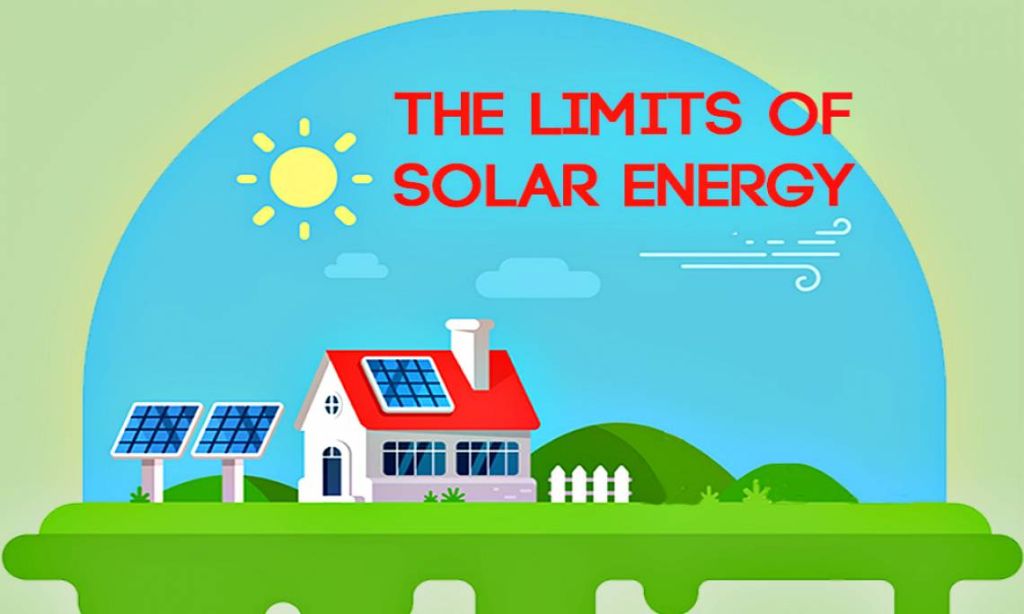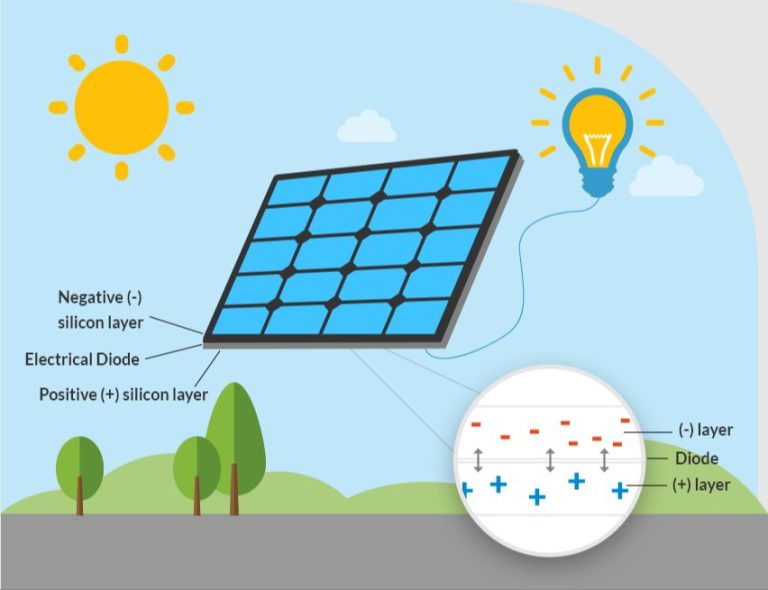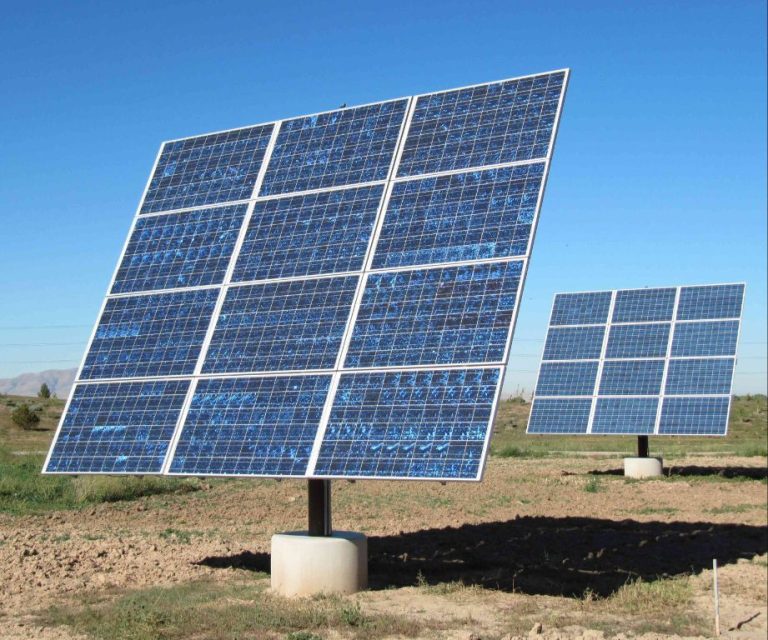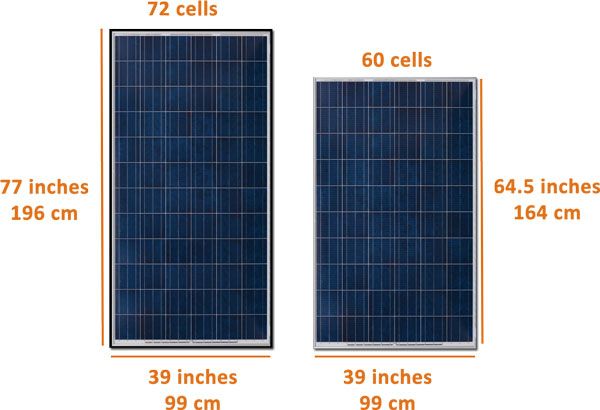Is Solar Energy Limited Or Unlimited?
1. Introduction

Solar energy is the radiant energy produced by the Sun that is harnessed using a range of technologies such as solar heating, solar photovoltaics, solar thermal energy, solar architecture, molten salt power plants, and artificial photosynthesis (Bloomberg, 2015).
Solar energy is generated through nuclear fusion reactions within the Sun which convert hydrogen into helium. The Sun has been producing energy this way for billions of years and is expected to continue for billions more – making solar energy an essentially unlimited, renewable resource (Introduction to Solar Energy, n.d.).
There has been debate around whether solar energy truly has limits given the massive scale required to power global society and intermittency factors that require storage solutions. While solar panels themselves have efficiency limits, the overall amount of solar energy available is enormous relative to humanity’s energy needs. Therefore, solar energy is considered a renewable resource limited primarily by storage and infrastructure capacity rather than an inherent limit to the Sun’s vast energy supply. With continued technology improvements, solar energy remains a small fraction of its immense renewable potential (Bloomberg, 2015).
SOURCES:
Bloomberg, M. R. (2015). Bloomberg New Energy Finance. Retrieved from https://www.dynamicslr.com/introduction-to-solar-energy/
Introduction to Solar Energy. (n.d.). Retrieved from https://insights.cincoland.com/blog/an-introduction-to-solar-energy
The Sun’s Energy Output
The sun produces an enormous amount of energy through nuclear fusion reactions in its core. The total solar energy absorbed by Earth is about 1.8 x 1017 watts per year, which is over 10,000 times more than the world’s total annual energy consumption. Even though only a tiny fraction of this solar energy reaches the Earth’s surface, it still amounts to roughly 120,000 terawatts – vastly exceeding humanity’s needs.
To put it in perspective, a terawatt (TW) is equal to one trillion watts. The average nuclear power plant has an output capacity of only 1 gigawatt (GW). At today’s energy usage, the sun radiates enough energy to our planet in just one hour to satisfy the world’s power needs for an entire year!
So in terms of the sun’s total energy output, it is essentially unlimited from a human perspective. The sun will continue burning bright for billions of years, providing Earth with an abundant and inexhaustible supply of solar power. We would need to capture only an extremely small fraction of the sunlight reaching our planet to meet all of civilization’s energy demands now and long into the future.
Potential Solar Energy on Earth
The amount of solar energy that reaches the Earth’s surface every year is enormous – approximately 1.2 x 10^18 kWh (According to Solar Energy Potential and Utilization | EARTH 104). This is about 10,000 times more than the total annual energy consumption of the world. However, only a tiny fraction of this solar energy is currently being utilized. The amount of solar energy that can be captured depends on the geographic location. Solar energy potential is highest near the equator where sunshine is more abundant. For example, the southwestern United States has a solar insolation of 6-7 kWh/m2/day compared to 2-3 kWh/m2/day in Alaska (According to NASA’s The Balance of Power in the Earth-Sun System). While solar energy utilization is growing rapidly, it still only accounts for about 1% of the world’s total energy consumption. Therefore, there is tremendous untapped potential to utilize more of the abundant solar energy available to us.
Solar Panel Efficiency
Solar panel efficiency refers to how much of the sunlight that hits a panel gets converted into usable electricity. Higher efficiency panels can generate more electricity from the same surface area as lower efficiency panels. This affects the total potential solar energy that can be utilized. As the National Renewable Energy Laboratory explains, “Higher efficiencies mean that less surface area is needed to generate the same amount of power.” 1
Typical solar panels on residential rooftops convert sunlight to electricity at 15% to 20% efficiency. However, over the last decade, researchers have made major advances improving solar cell efficiency through new materials and designs. Top lab cell efficiencies now exceed 30%. 2 Experts predict average commercial panel efficiency could reach 24% by 2030. 3
New multi-junction cells using a wider color spectrum of light have reached over 40% efficiency in labs. Perovskite solar cells are also emerging as a promising thin film technology, with efficiency rapidly increasing from 3% to over 25% in a decade. 4 As these technologies mature, higher efficiency panels will allow us to harvest substantially more energy from the sun.
Energy Storage
One key factor affecting the utilization of solar energy is the ability to store and discharge the energy when needed, not just when the sun is shining. According to the U.S. Department of Energy, “With increasing solar and wind production, storage technologies are crucial for reliability and resiliency of energy infrastructures.”
Some popular energy storage technologies used with solar include batteries, pumped hydro storage, compressed air energy storage, flywheels, and thermal energy storage. Lithium-ion batteries in particular have become much cheaper and more efficient in recent years. Major companies like Tesla offer large grid-scale battery systems to store solar energy. Homeowners can also install small battery systems to store solar energy from rooftop panels. According to Greenlancer, battery costs have fallen nearly 90% in the last decade while performance has improved.
In addition to lower costs, battery storage capacity continues to increase. For example, Tesla offers the Megapack which can store up to 3 megawatt-hours of energy in a single unit. With improved battery and other storage technologies, as well as lower costs, solar power can increasingly be stored and utilized when needed.
Cost Trends
The cost of solar panels has decreased dramatically over the past few decades. According to CNET, the average cost of a rooftop solar system in 2024 is around $22,022 for an 11 kW system, down from about $50,000 just 10 years ago.
SaveOnEnergy reports that the average cost of a home solar system has fallen by almost 70% in the last 20 years. The main factors driving down costs have been improvements in solar panel efficiency and manufacturing improvements.
As prices have fallen, adoption of solar power has increased significantly. With solar energy becoming more affordable, more homeowners and businesses are choosing to install solar panels. This increase in demand has further driven growth in solar panel production and installation services, creating positive feedback that lowers costs.
Industry experts predict solar prices will continue to decrease in the coming years. Lower solar costs coupled with supportive government policies could enable solar power to become a mainstream electricity source and play a major role in reducing greenhouse gas emissions.
Growth Projections
Solar energy capacity in the United States is projected to grow substantially in the coming decades. According to the Solar Energy Industries Association (SEIA), solar PV installations are forecasted to more than double from 2022 to 2023, increasing from 19 GW to 40 GW. By 2025, Wood Mackenzie predicts the U.S. solar market will surpass 100 GW of installed capacity, with an annual growth rate of 20% through 2030.
Many projections indicate solar could provide 20% of U.S. electricity by 2030 and up to 40% by 2035 [1]. The International Energy Agency (IEA) forecasts global solar PV capacity to expand from 760 GW in 2021 to over 4700 GW by 2040 under its Net Zero scenario [2]. This represents nearly a 6-fold increase within two decades.
However, some projections may be overoptimistic about the pace of growth, as they do not fully account for potential limiting factors like grid integration challenges, land constraints, and battery storage costs. Continued policy support and advances in technology will likely be needed for solar to scale up to provide 20-40% of electricity generation.
Limiting Factors
While solar energy has significant potential, there are some factors that may limit its growth and scalability. Some key limiting factors include:
Land area – Solar panels require a lot of space to generate significant amounts of electricity. Finding sufficient available land area with proper sun exposure is a challenge, especially in densely populated areas. However, innovations like rooftop solar on homes and buildings help mitigate this issue. Solar farms can also be built on marginal land not suitable for other purposes.
Storage and transmission – Solar energy can only be captured when the sun is shining. Effective storage technology is needed to provide power at night and 24/7 grid reliability. New battery storage innovations are helping, but further improvements and cost declines will enable wider deployment. Transmitting solar electricity from sunny regions to population centers is also a hurdle requiring substantial investment.
Intermittency – Solar power generation fluctuates throughout the day with sunshine levels. Smoothing out this intermittency requires either storage or dispatchable power plants that can ramp up when solar dips. Sophisticated grid management is needed to integrate large amounts of solar capacity.
While these factors impose challenges, none are true hard limits on solar’s growth potential. Innovation and supportive policies can help overcome these barriers. With continuing advances, solar appears poised to become a major pillar of the global energy system this century.
Sources:
https://www.constellation.com/energy-101/energy-innovation/solar-energy-pros-and-cons.html
https://energy5.com/the-limitations-of-solar-energy-what-you-must-consider-before-going-solar
Role of Policy
Government policies at the federal, state, and local levels have played a crucial role in enabling the growth of solar energy in the United States. Policy initiatives aim to make solar more affordable and accessible while also supporting continued innovation and cost reductions.
Key federal policies include the investment tax credit (ITC), which provides a 26% tax credit for installing residential and commercial solar systems (Solar Energy Toolkit). The ITC has spurred substantial solar adoption since it was established in 2006. There are also federal renewable portfolio standards that require utilities to source a portion of their electricity from renewable sources (Sistine Solar).
At the state level, over 30 states have enacted renewable portfolio standards, and many have additional solar incentives, tax credits, and rebate programs (Department of Energy). States and cities have also adopted solar-friendly permitting, zoning, and interconnection standards to reduce soft costs.
These supportive policies have played an integral role in driving down costs and mainstreaming solar technology. As solar continues to expand its share of electricity generation, evolving policy frameworks will be critical to enabling further growth.
Conclusion
In summary, while the energy from the sun is unlimited, our ability to harness solar power on Earth has limits. The amount of solar energy that reaches the Earth’s surface is vast, but we are constrained by solar panel efficiency, energy storage capacity, and the costs and materials needed to build enough capacity to meet all our energy needs. Even with rapid growth projected in solar installations, full utilization would require covering significant land and marine areas with panels. With thoughtful policies and continued innovation, solar can expand to provide a larger portion of the world’s renewable energy mix, but is unlikely to meet all our demands given the immense scale of society’s energy use. We must pursue solar in combination with other renewables, continued efficiency improvements, and responsible energy usage. With realistic expectations of its capabilities as well as its limits, solar power can play a key role in transitioning toward a more sustainable energy future.






